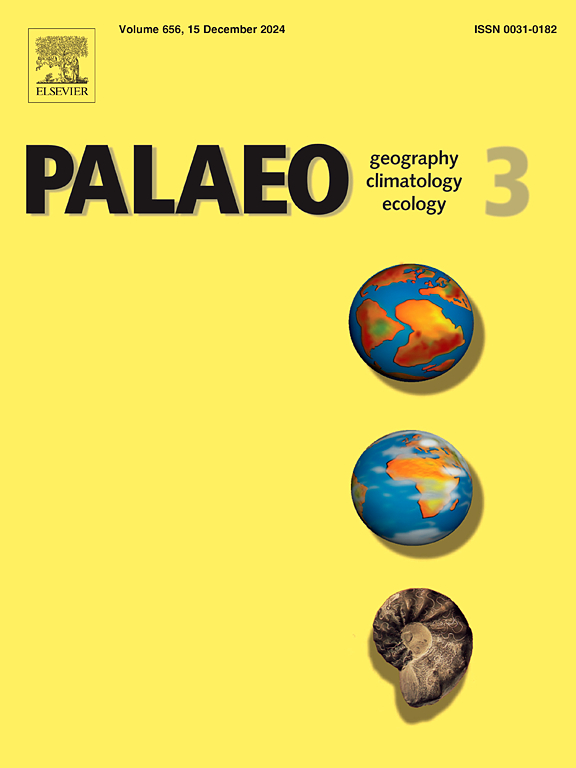Late Miocene weakening of the South Asian Monsoon: Insights from the Siwalik of Nepal
IF 2.6
2区 地球科学
Q2 GEOGRAPHY, PHYSICAL
Palaeogeography, Palaeoclimatology, Palaeoecology
Pub Date : 2025-02-07
DOI:10.1016/j.palaeo.2025.112789
引用次数: 0
Abstract
The South Asian Monsoon (SAM) is the strong summer monsoon within the Asian Monsoon System, driven by the thermal gradient between the warmer Asian landmass and the cooler Indian Ocean. High-resolution marine proxies indicate a decline in SAM strength after approximately 10 million years ago (Ma); however, terrestrial evidence has been limited. We present high-resolution and well-dated leaf assemblages from the Lower and Middle Siwalik of central Nepal, supported by paleoclimate modelling, which suggest a weakening of the SAM between 10.24 and 8.5 Ma. This decline is linked to a reduction in moisture supply, possibly due to a weakening of the Somali Jet. Our study highlights the potential of leaf physiognomy to reconstruct monsoon strength.

求助全文
约1分钟内获得全文
求助全文
来源期刊
CiteScore
5.90
自引率
10.00%
发文量
398
审稿时长
3.8 months
期刊介绍:
Palaeogeography, Palaeoclimatology, Palaeoecology is an international medium for the publication of high quality and multidisciplinary, original studies and comprehensive reviews in the field of palaeo-environmental geology. The journal aims at bringing together data with global implications from research in the many different disciplines involved in palaeo-environmental investigations.
By cutting across the boundaries of established sciences, it provides an interdisciplinary forum where issues of general interest can be discussed.

 求助内容:
求助内容: 应助结果提醒方式:
应助结果提醒方式:


